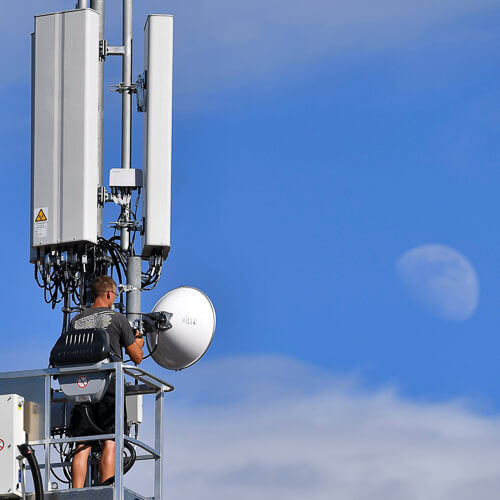Rural US wireless carriers ask for more 5G subsidies
The FCC set aside $9 billion in 2020 to help fund the construction of 5G networks in rural areas of the US. But the operators serving that market are arguing for more, to the tune of $36 billion.

The FCC is scheduled to release $9 billion in the coming years to help finance the construction of 5G networks in rural parts of the US. But according to the operators serving those areas, that figure is nowhere near enough.
"For many carriers, upgrading to 5G in remote areas will not generate new revenues from existing customers, and likely will not attract many new ones," wrote the Coalition of Rural Wireless Carriers in a recent filing to the FCC. "Accordingly, the commission should include in any proceeding it opens a proposal to develop a mechanism for providing support for operations and maintenance, to ensure that facilities in remote areas remain operational and that carriers have an opportunity to upgrade them."
The Coalition of Rural Wireless Carriers includes operators such as Carolina West Wireless, Pioneer Cellular, C Spire, Appalachian Wireless, Viaero Wireless, Nex-Tech Wireless, Union Wireless, UScellular and United Wireless Communications. As Light Reading has previously reported, a number of these operators have already embarked on 5G deployments.
Figure 1:  (Source: dpa picture alliance / Alamy Stock Photo)
(Source: dpa picture alliance / Alamy Stock Photo)
However, others are also calling for more government funding for rural 5G.
"It is clear that consumers view access to wireless connectivity as vital. Unfortunately, many parts of the United States, especially rural America, are at risk of being left behind," wrote the Competitive Carriers Association (CCA) in its filing to the FCC. The CCA represents many of the nation's smaller wireless network operators. The group argued that more FCC funding is needed to address what it calls the "5G gap."
$36B ought to do it
Both the CCA and the Coalition of Rural Wireless Carriers pointed to a recent 5G network buildout model released by financial analysis firm CostQuest. The firm's report found that $36 billion is needed to support ubiquitous 5G connectivity in the US – far more than the $9 billion the FCC set aside in 2020 for its 5G Fund.
"Establishing the 5G Fund further secures United States leadership in 5G and will close the digital divide and bring economic opportunities to rural America," the agency argued at the time.
However, FCC officials have said that they plan to wait to allocate the 5G Fund until after the agency finishes developing updated maps that show where broadband is available in the US – and where it is not.
"For too long, our broadband maps have been a patchwork with information gaps that impeded the ability of policymakers to assure that critical funding efforts could be precisely targeted to deploying broadband facilities to consumers and communities most in need," according to FCC Chairwoman Jessica Rosenworcel.
Another issue is a $3 billion shortfall in an FCC program designed to rip out "unsecure" telecom equipment – provided by Chinese suppliers ZTE and Huawei – from rural wireless networks. That program is intended to finance the installation of replacement equipment considered trustworthy.
It is also not clear how the 5G Fund might be coordinated with other programs designed to finance the construction of telecom networks in rural areas, including the NTIA's massive Broadband Equity, Access, and Deployment (BEAD) program. BEAD is poised to allocate more than $40 billion for such networks, though some analysts don't expect that cash to actually hit the market until 2025.
Already, a new report from the US government's Government Accountability Office (GAO) calls on the feds to address overlap among existing broadband funding programs.
Regardless, some rural carriers believe that they need more funding.
"We asked the commission to report to Congress that it intends to open a proceeding to develop a record on whether the size of the 5G Fund should be substantially increased to accelerate and sustain mobile broadband investment," wrote the Coalition of Rural Wireless Carriers. "We also asked the commission to consider in such a proceeding whether it should develop a middle-mile fiber funding program to increase fiber connectivity to cell towers located in remote areas."
Related posts:
— Mike Dano, Editorial Director, 5G & Mobile Strategies, Light Reading | @mikeddano
About the Author(s)
You May Also Like












